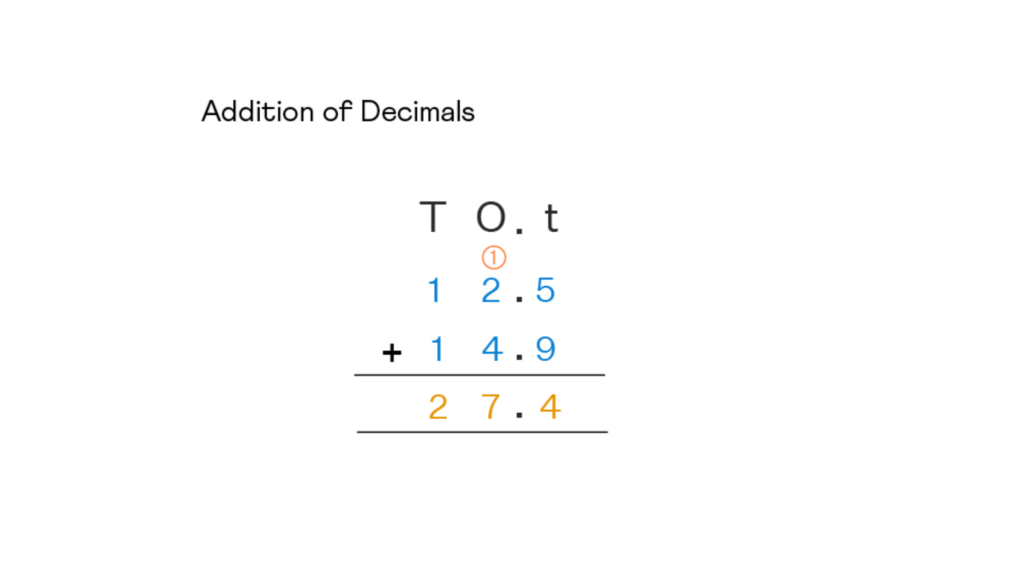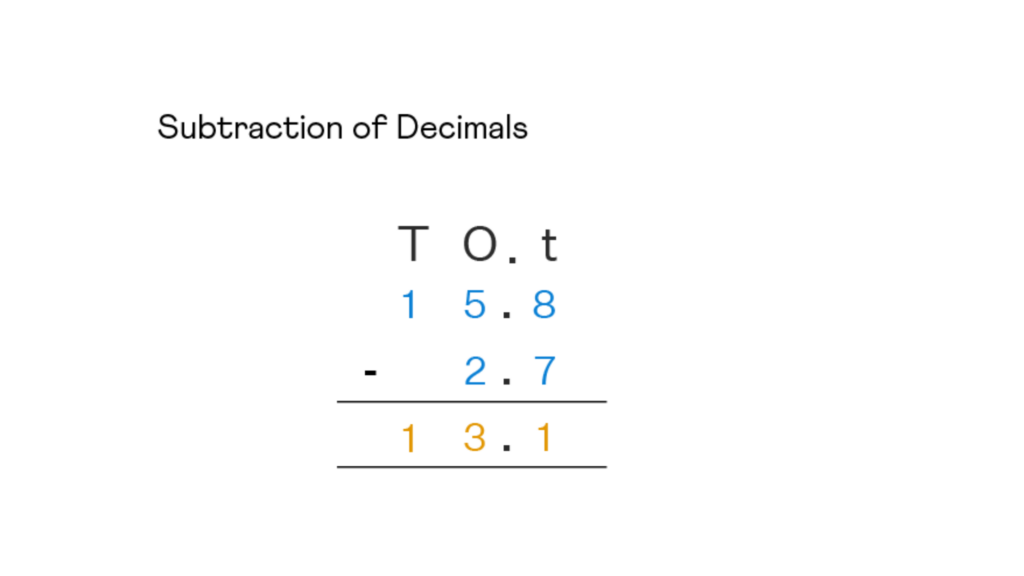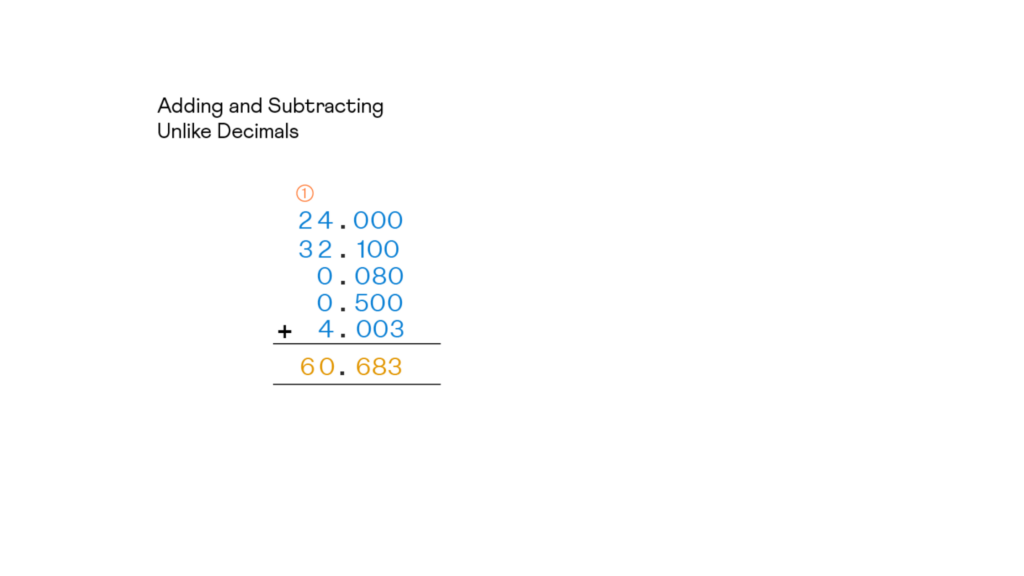As long as the decimal point is present, adding and subtracting decimals is identical to adding and subtracting whole integers. By adding or deleting zeros from the decimal portion, the length of the decimal integers can be changed. This post will teach us more about adding and subtracting decimals.
What is Addition and Subtraction of Decimals?
The standard addition and subtraction rules apply when adding and subtracting decimals. The decimal positions that follow the decimal point are the only things that need to be considered. Before and after the decimal point, the numbers must be written in columns based on their place values. According to the decimal place value chart, place values that come before the decimal point begin with ones, tens, hundreds, and so forth; place values that come after the decimal point begin with tenths, then hundredths, and so forth. Let’s use the addition of the decimal numbers described in the next section to better grasp this.
Addition of Decimals
The addition of decimals is done by starting from the right-hand side and then we move on to the left adding each column. For example, let us add 12.5 + 14.9 using the following steps.

- Step 1: Write the numbers one below the other such that they are aligned as per their place values and the decimal point is placed one below the other.
- Step 2: Now add the decimal numbers to get the sum. In this case, 12.5 + 14.9 = 27.4
Now let us understand the subtraction of decimals in the following section.
Subtraction of Decimals
The subtraction of decimals is done in the same way as the subtraction of whole numbers. We just need to write the numbers correctly according to their place values. Let us understand this with the help of the example given below.
Example: Subtract the given decimals: 15.8 – 2.7
Solution: Let us subtract these decimals using the following steps.

- Step 1: Write the numbers one below the other such that the larger number is on top and the smaller number is written below it.
- Step 2: Now subtract the decimal numbers starting from the tenths column, moving on to the ones column, and then the tens column. Copy the decimal as it comes. In this case, 15.8 – 2.7 = 13.1
Adding and Subtracting Unlike Decimals
Decimal values that have a different number of digits after the decimal point are referred to as “Unlike decimals.” For instance, 3.45 and 7.831 are ‘unlike decimals’ since they have two and three integers following the decimal point, respectively. To put it another way, decimals are said to have varying lengths. Unlike decimals, they can be used conveniently for addition and subtraction operations. The ‘unlike decimals’ simply need to be changed to ‘like decimals’ by inserting zeros where the decimal values’ lengths differ. Each number’s decimal digits become equal in this manner, making it simpler to add or subtract the numbers.
Example: Add the decimal numbers 24, 32.1, 0.08, 0.5, and 4.003
Solution: Let us add these numbers using the following steps.

- Step 1: Here, each of the numbers needs to have an equal number of decimal digits.
- Step 2: For this, we rewrite the numbers as follows: 24.000, 32.100, 0.080, 0.500, and 4.003. Therefore, the sum of the given decimal numbers is 60.683
How to Add and Subtract Decimals with Whole Numbers?
For adding or subtracting a decimal and a whole number, the whole number is changed into a decimal number. This is done by placing a decimal after the whole number and then writing the required number of zeros after the decimal point. For example, the whole number 5 is written in the decimal form as 5.0. Let us understand this with the help of the following examples.

Example: Add 15 + 12.56
- Step 1: Refer to the figure given above and place a decimal after 15 and write two zeros after it so that both the numbers become like decimals.
- Step 2: Now add the decimal numbers and find the sum using the usual rules of addition. Therefore, the 15 + 12.56 = 27.56
Let us understand this using subtraction.
Example: Subtract 6 – 2.25
- Step 1: Refer to the figure given above and place a decimal after 6 and write two zeros after it so that both the numbers become like decimals.
- Step 2: Now subtract the decimal numbers and find the difference using the usual rules of subtraction. Therefore, 6 – 2.25 = 3.75
Important Points on Addition and Subtraction of Decimals
- The value of a decimal does not change on placing a zero after the decimal digits. For example, 5 can be written as 5.00
- Even though the time and angle measure is represented in decimal format, they cannot be added or subtracted as decimals.
It might be helpful:
Methods for Assisting Your Preschooler with Early Math Concept Understanding

